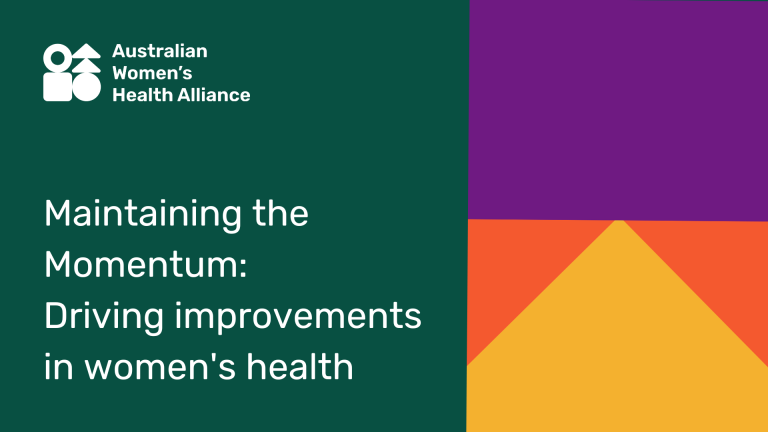
Women’s health is having a moment. There is momentum to drive improvements in women’s health.
Nationwide, people are talking about women’s health. Topics like endometriosis and pelvic pain are being raised in electorate offices and party rooms. We’ve had numerous women’s health-related senate inquiries. We now have a National Women’s Health Advisory Council challenging medical misogyny, and this year saw a Women’s Health Summit at Parliament House.
We’ve also seen media stories about women’s health in major mainstream publications and corporations are basing advertising campaigns on addressing the gender pain gap and understanding gendered health needs.
Following our AGM, we heard from an exciting group of speakers discussing how we can capitalise on the current moment and maintain the momentum to push for lasting change and impact in women’s health.
Our 3 guest speakers, Barbara Baird, Alexandra English and Angelina Inthavong, shared reflections on how we can learn from movements and moments of the past, they dove into what the current moment means, and looked forward to ways we can work in the future.
Key points
- There is no single way to organise and lead change, however building broad coalitions and centring community are key to sustainable and effective movements.
- Systemic change is important, but we must also work to educate, share information and mobilise communities.
- Attention alone is not enough to drive long-lasting improvements in women’s health. Moments pass quickly. We must be ready to act rapidly to capitalise on opportunities and simultaneously be strategic in our planning for when the spotlight fades.
- Intersectional leadership, representation, co-design and centring lived experience are vital and must be genuinely valued, with new systems created that reflect their importance.
- We need to work intergenerationally across sectors, building capabilities and developing a pipeline for change.
It’s time for the next generation of leaders to mobilise, to evolve the future of women’s health in Australia and beyond.
Speaker bios
Resources
- Abortion Care is Health Care by Barbara Baird: A history of the challenges facing medical abortion provision in Australia and the people trying to overcome them. Read more.
- How Do We Close The Gender Pain Gap? by Alexandra English: The gender pain gap, a phenomenon under the umbrella of medical misogyny, refers to how a woman’s pain is more likely to be poorly understood and mistreated because of gender biases. Read more.
- South Australian Abortion Action Coalition (SAAAC): SAAAC are a united front of individuals and professional organisations in the medical, legal, academic, social justice and advocacy fields who are committed to achieving the best quality abortion care in South Australia. Read more.
- Universal Access to Contraception Campaign by Sexual Health Advocates for Reproductive Equity (SHARE): SHARE is a diverse collective of activists dedicated to ensuring that access to sexual and reproductive healthcare is recognised as a fundamental human right. Their mission includes campaigning for universal access to contraception. Read more.